#costume history
Photo

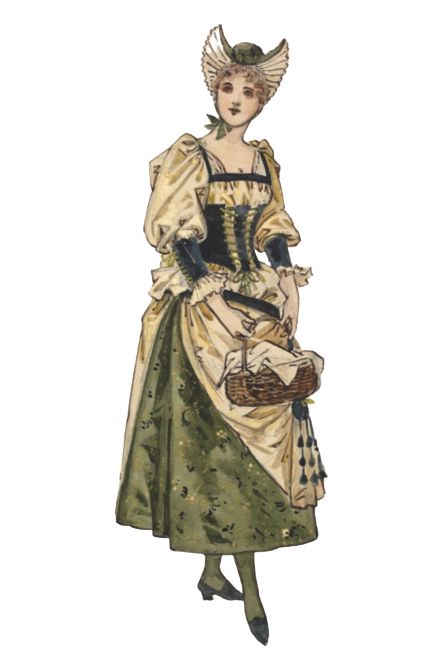

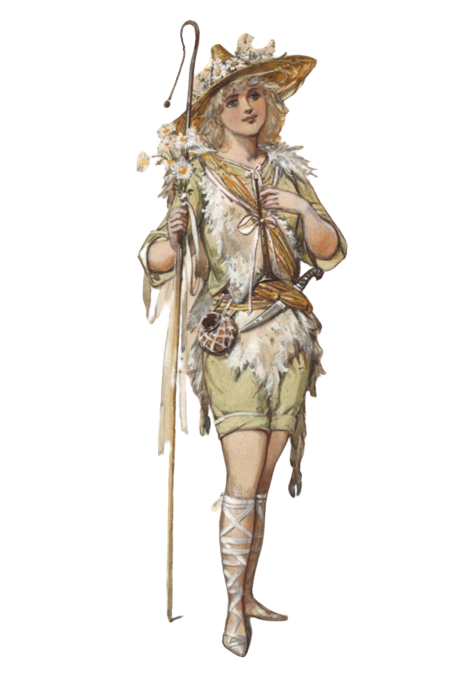

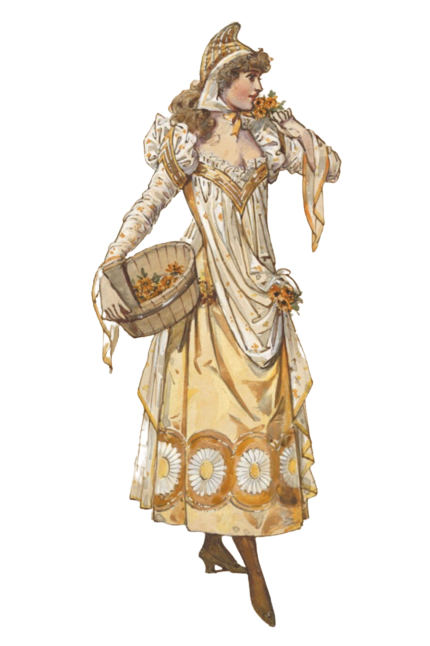



Wilhelm pantomime costume design (1890-1910) PNGs, part 5.
(from: vam)
#png#pngs#transparent#transparents#moodboard#artboard#imageboard#sticker#stickers#costume history#costume design#costume#pantomime#polyvore#shoplook
2K notes
·
View notes
Photo

House of Worth, c. 1893-95. Red silk velvet.
“Severe corsetting falling at the natural waist, a flaring skirt, and the return of gigot sleeves constituted a fin-de-siècle extremism. The engorgement of sleeves and skirt made this extreme constriction seem even more exaggerated in the context of the bulbous shapes surrounding the ideal, hard, narrow waist. The style was maintained well into the twentieth century as a flattering stage effect by actresses such as Sarah Bernhardt. “
via The Metropolitan Museum of Art
#dream dress#costume history#fashion history#victorian fashion#victorian#victorian dress#house of worth
4K notes
·
View notes
Text

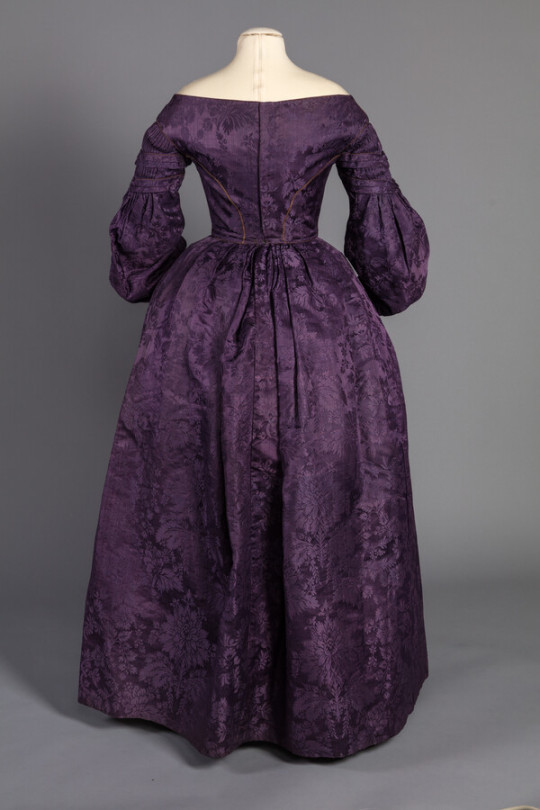
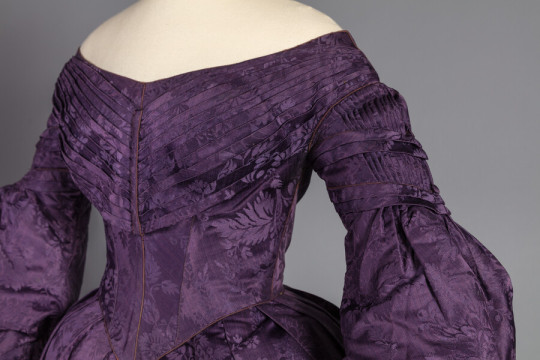
Oh, saints. This dress combines so many things I love in one place!
First of all, we’re in the late 1830s (by my guess), a time of dress transition. You can see the influence of the Romantic with those sleeves, but the hint of later Victorian gowns in the bodice shaping. The particular bodice here is fan-pleated, which is pretty self-explanatory if you look at the way the fabric is both pleated and fanned out. I do adore the result.
But, ahem, that damask? That color? Purple, always. Of course. For a 200 year old dress, the hue is still so striking. It is not Perkins Purple, however, as it’s two decades too early for that.
The weave? I damn near fell out of my chair looking at it. It’s one of those cases where I wish there were even higher resolutions so I could zoom in and see the stitches. Alas, we are not yet there in terms of technology, so I will instead cope with this.
And then it gets better. Because that silk damask? It’s almost 100 years older than the dress itself. UGH I LOVE IT SO MUCH. Could it have been Spitalfields? Maybe! It’s hard to say because we don’t have the provenance.
From the Maryland Center for History and Culture.
#silk dress#1830s#fashion history#textiles#costume history#historical costuming#history of fashion#costume#threadtalk#19th century fashion#historical fashion#spitalfields silk#damask
2K notes
·
View notes
Text

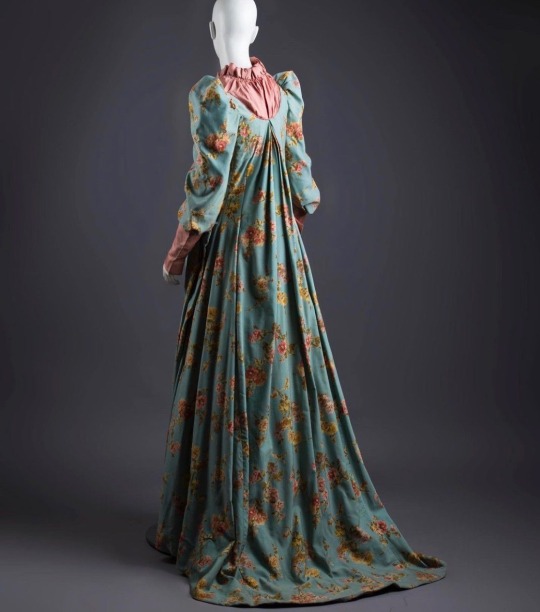
Tea gown
c. 1880s
cotton and satin
UNT Digital Library
#tea gown#1880s#victorian dress#19th century#history of fashion#historic fashion#historical fashion#victorian fashion#dress history#fashion history#vintage fashion#costume history#frostedmagnolias
232 notes
·
View notes
Text

Probably the most notorious lovers of the Wars of the Roses: Edward IV and Elizabeth Woodville
This was a fun one. The legend goes they met under an oak tree, and that Edward pursued Elizabeth until she agreed to marry him in secret. There's so much going on between these two figures, but it does seem that despite everything it does seem that Edward and Elizabeth had genuine affection for one another.
#illustration#wars of the roses#elizabeth woodville#edward iv#watercolor#costume history#english history#colored pencils#artists on tumblr
340 notes
·
View notes
Text

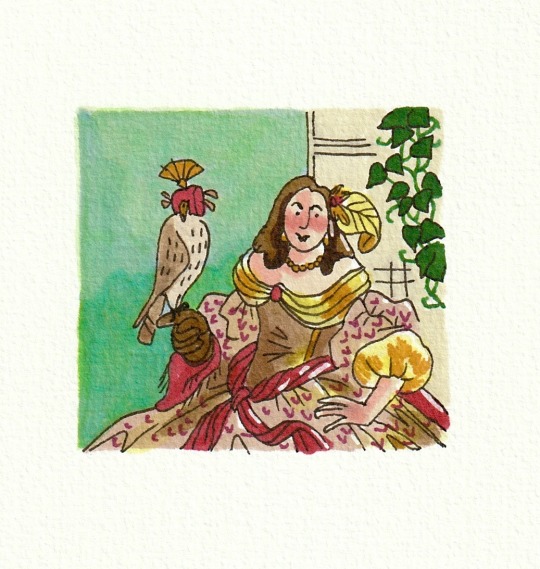

Inspired by Alexis Simon Belle, Van Der Helst, De Largillière
Follow me on Instagram
279 notes
·
View notes
Text

George Barbier, Mlle Jeanne (Jane) Marnac dans "Manon, fille galante". Shoes by Perugia (André Perugia), costume de George Barbier for Charles Frederick Worth, detail. La Gazette du Bon ton, 1924-1925.
#george barbier#illustration#vintage#art#perugia#1924 illustrations#art history#costume#costume history#worth#charles frederick worth#Jeanne Marnac#jane marnac#costume illustration#gazette#gazette du bon ton#magazin#1920s#1924#20s#20s costumes#20s illustrations#manon fille glante#André Perugia#Andre Perugia#house of worth#maison worth#Jane Marnac#Reynaldo Hahn#hahn
96 notes
·
View notes
Text
Ryan Yip explains what a fabulous resource for sewers of all kinds the Royal School of Needlework Stitch Bank is.
#sewing#embroidery#stitches#database#needlework#textiles#fashion#fashion history#costume design#costume history#couture#ryan yip#tiktok#sewing resources#dressmaking#embellishment#decorative#video
69 notes
·
View notes
Text

Robe à la Française • French • c. 1770 • Metropolitan Museum of Art
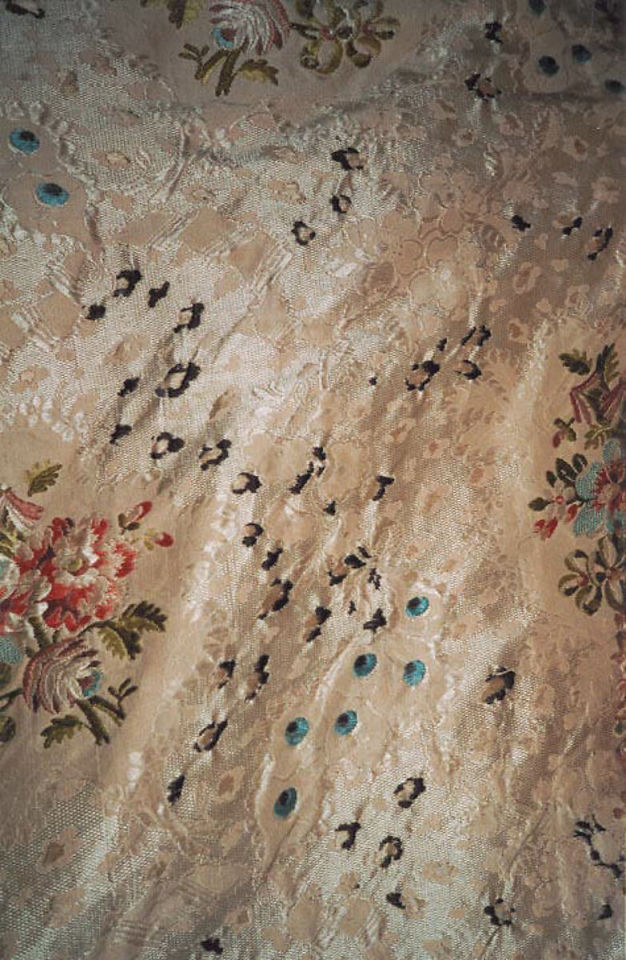

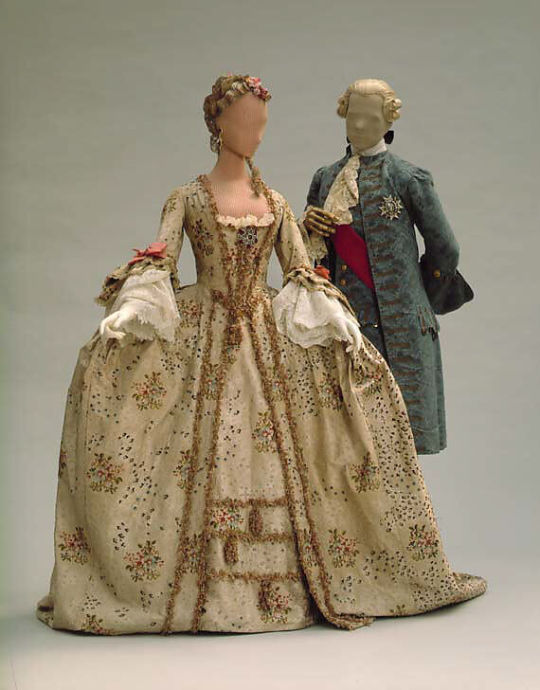
Rococo style embraced foreign styles with an inclusive, even rapacious eclecticism, but also with its own propensity to moderation and the small scale. During the period, Ikat, or warp-printed fabric, was modified to meet European taste. Saturated Eastern colors and bold geometrics became muted pastels in smaller floral and striped patterns characterizing many of the designs. – Metropolitan Museum of Art
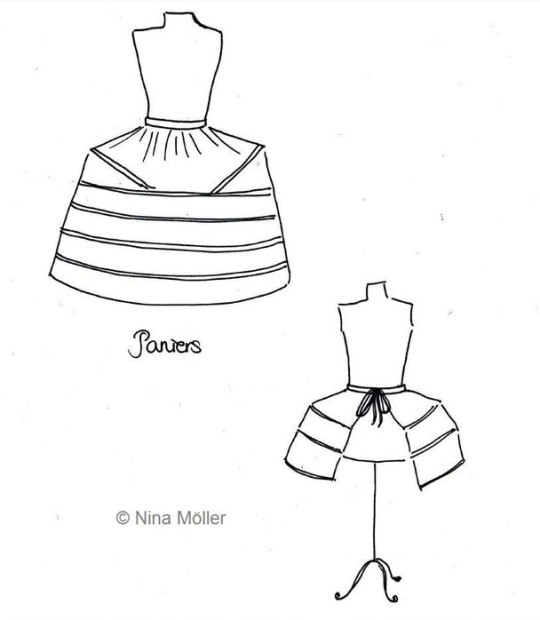
Panniers or side hoops are women's undergarments worn in the 17th and 18th centuries to extend the width of the skirts at the side while leaving the front and back relatively flat. This provided a panel where woven patterns, elaborate decorations and rich embroidery could be displayed and fully appreciated. – Wikipedia

Jean Honoré Fragonard • The Swing • 1767 • The Wallace Collection, London
#rococo fashion#18th century french fashion#costume institute MET#french court fashion#jean honoré fragonard#french artist#rococo artist#fashion in paintings#the swing#famous paintings#costume history#history of fashion#fashion history#historical clothing#the resplendent outfit
62 notes
·
View notes
Text
idk if anyone has made a post abt this and it’s been buried beneath everybody rejoicing abt jonathan, but the moment yesterday when mina covered her feet in mud was so interesting to me.
so many things in that diary entry spoke to the strict rules of dress governing the lives of rich victorian women—mina tries to figure out where lucy has gone based on what dress is missing from the closet, because no one in their right mind would ever wear a housedress outside! and then the horror of lucy wearing her nightgown, because she could catch cold in a single layer but more importantly because someone could see her like that. mina has to take time to get dressed before searching for lucy, for fear of midnight watchers of the non-monstrous kind. she’s in such a hurry to cover lucy up that she thinks she could have pricked her through. and then she puts her shoes on lucy’s feet: lucy is the upper class woman whose reputation has farther to fall.
mina loves her friend so much that she goes barefoot down all those stairs for her, but her feet would stand out as a flash of white in the dark of the night (just like lucy’s nightgown) so she covers them with mud like she covered lucy with a shawl. mina doesn’t know abt the monster yet, so she fears men standing in doorways and neighbours peering out of windows. white skin and undergarments shine through the dark and signify sin—like a flash of pointed teeth. some things must be hidden for society’s sake, skin and nightgowns and monstrous behaviour and lunatics locked away in asylums. the horror is that all of this is escaping into the real world and must be hidden away and conquered in silence. that’s why mina doesn’t tell anyone about lucy’s condition—errancy must be kept under wraps (literally). the book is told in diary entries and letters because no one would dare speak its events out loud.
(historical note: we joke about victorians and their sexy ankles, but based on the decorated stockings throughout this period it seems that ankles were okay as long as they were covered by socks. bare feet, skin in unmediated contact with the public world, are so preposterous that mud is preferable.)
1K notes
·
View notes
Photo

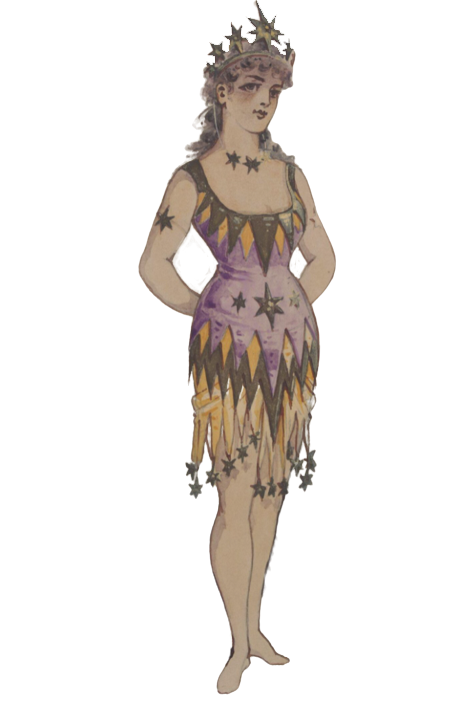



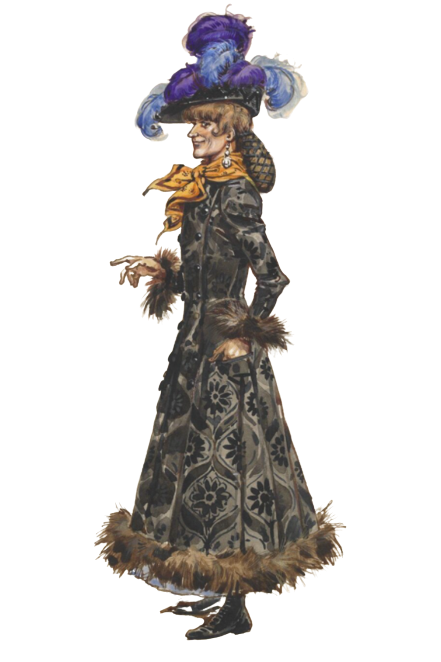
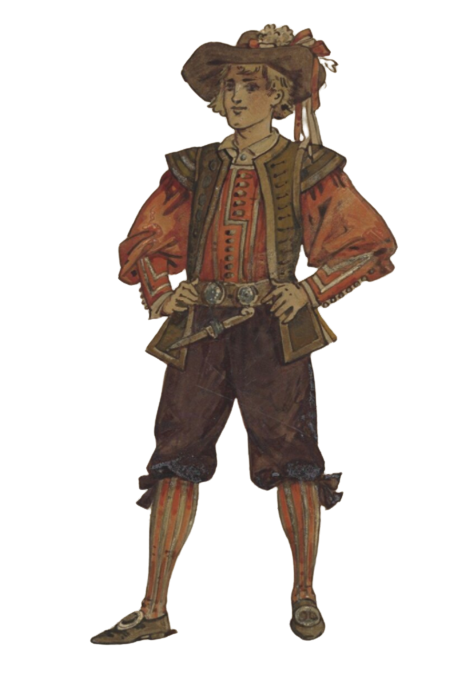
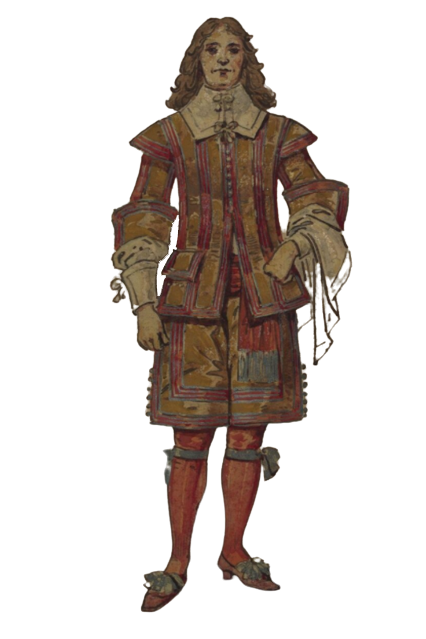
Wilhelm pantomime costume design (1890-1910) PNGs, part 4.
(from: vam)
#png#pngs#transparent#transparents#moodboard#artboard#imageboard#sticker#stickers#polyvore#shoplook#costume history#costume design#pantomime
2K notes
·
View notes
Text
Costuming Strahd: Art Addendum
I didn't include any mention of the official Dungeons & Dragons art for Strahd von Zarovich in my previous post, because I had dismissed it outright. There, I said it.
I shall strive to amend my folly in this addendum.
Let's start with that 5e cover:
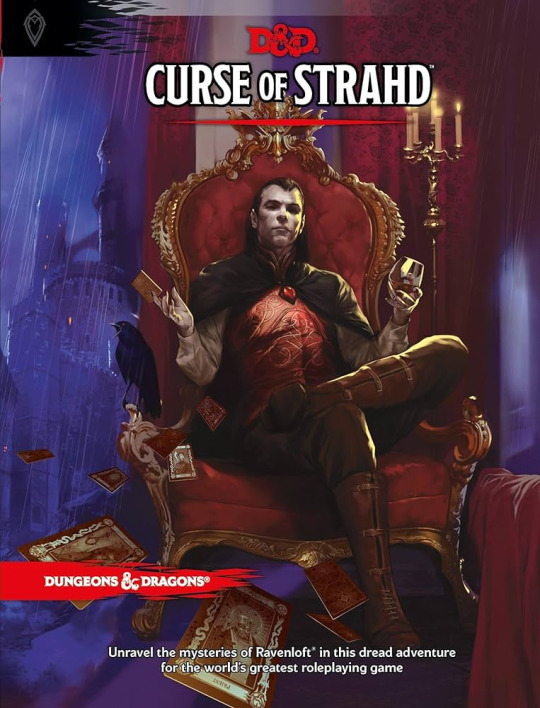
I generally approve of this representation. No doubt it colored my concept of Strahd's silhouette, since this is the first image of Strahd I came into contact with, some two or three years ago.
The shape of this garb is much like what I was aiming for in my previous post. Strahd is sporting a crisp shirt with stiffened, buttoned cuffs, much like our modern button-downs or blouses spanning back into the mid-1800s. His torso is trim in a fitted vest with standing collar, which easily fits into the category of fantasy-Renaissance. Speculation on from where/when exactly the inspiration comes might be a futile effort; it would find itself at home among the elves in The Lord of the Rings, and I'm not about to dig into that concept work just now.
Actually, what his vest reminds me of most is 15th century brigandine [or tabard (see below), which would cover brigandine or a breastplate, which is why] it's the right length, if nothing else.



Reconstructing History, He's literally Elrond, and some brigandine
I believe I said it's easy to fake good pants, especially when sitting down. This example reinforces my point. His legs are indeed covered, and the result is not garish. Not particularly exciting, but nonetheless successful. You could probably even call them hose if you really wanted to.
His boots are literal extant riding boots, from "early 20th c." England, and honestly I'm so proud of this one-to-one reference.



[Fig. 1] and [Fig. 2], although my first thought had been Victorian cycling boots.
The cape draped around his shoulders appears to be quite thin and probably only falls to about his fingertips, since it doesn't drape over the chair cushion and he's not sitting on it. It could look like some kind of military cape. Or maybe even, to drag him back a few centuries again, something Elizabethan.

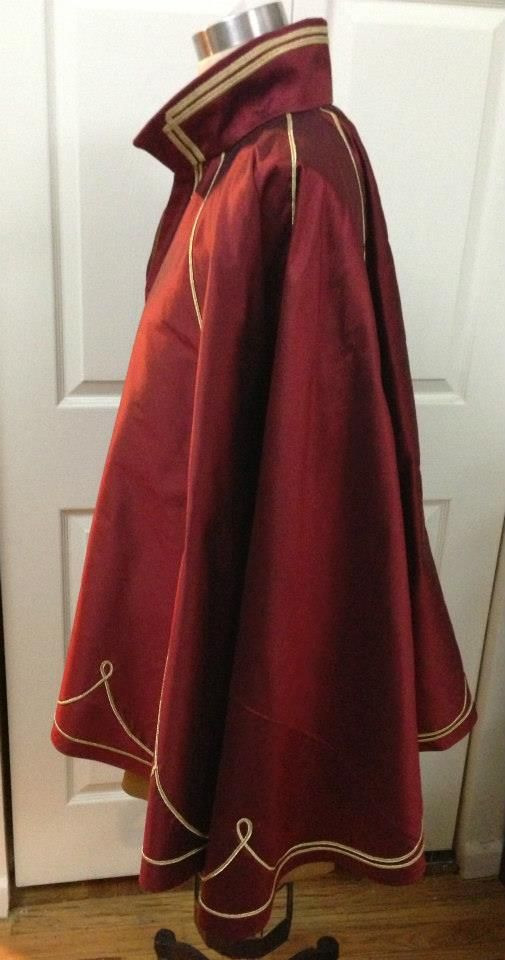
I'll do a whole thing on capes later.

Moving on...
Early Strahd von Zarovich was definitely Dracula by another name, but later art has been pretty consistently (from what I can see) this other red/blue outfit, with baffling ruby clasps instead of a single pendant around his neck.

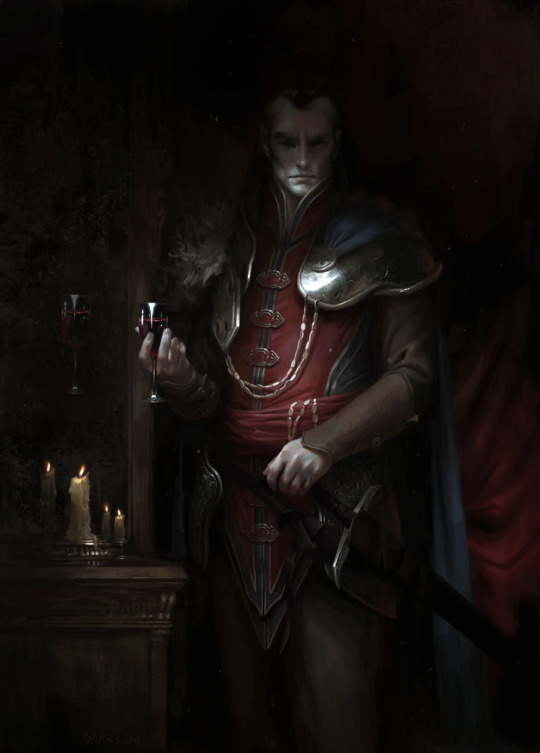

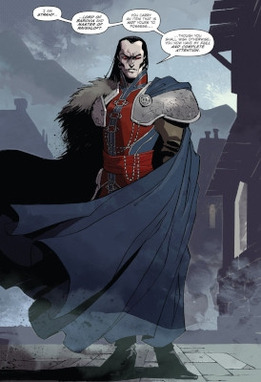

That last one has me. To be fair, it's the only one gazing back at the observer... >.>
Look. This garb is sexy. It cannot be understated. While it's not what I'm going for in my own costume foray, this is a fantastic design. Here's why:
The line where blue meets red along his ribcage accentuates his chest. That same red draws the eye down over his crotch, subtly curving to accomodate his thighs. Those chains on his cloak and the sash around his waist are positively drippy, like the source of the Ivlis pouring down to the Tser Pool. The asymmetry of that and his mismatched shoulders gives him such a dynamic slant, something to visually climb back up like handholds on the face of a cliff. And the sash is supple, in direct contrast to his armored hips, solid and stalwart. His limbs are clad in slim nondescript brown, making it all the easier to focus in on his center, in high contrast dotted with solid rubies. The red and blue both, especially together, are blood colors, indicative of veins hidden beneath the skin.
He might be covered from toe to jaw, but this is an intimate costume.
Despite my appreciation for it, though, again, I personally am trying to make something a little less Lord of the Rings. For reasons.
So, let's see what I can come up with in terms of historical inspiration... if anything, lol.
This is going to be fairly stream-of-consciousness.
(Not that it wasn't already, I suppose.)
The first thing that came to mind was a kaftan (or zupan?), because they can be fitted through the torso and feature a standing collar and embellished closures up the front. But, kaftans from Russia, the Ottoman Empire, and other areas touched by those cultures usually also have sleeves. I finally found the two illustrations below without sleeves, but they were difficult to track down and I'm not sure how much of what they depict is imaginary. (Although the sword, pouch, and helmet from the first one are definitely from an extant burial site.)
There's also the Polish kontusz, where the arms can be worn out of the sleeves, with the sleeves flipped back, and that can give the illusion of sleevelessness... A lot of examples I found of this particular garment are also open to the waist, which is delightfully provocative, but doesn't resemble the Strahd ensemble.


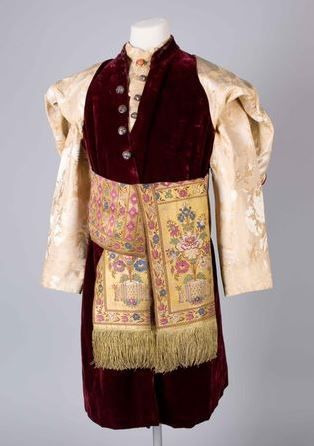
Examples from Chernigov (Ukraine) and apparently Moldova; a Polish kontusz
I can think of little source material for that long, pointed fantasy hemline, but allow me to grasp at some straws.
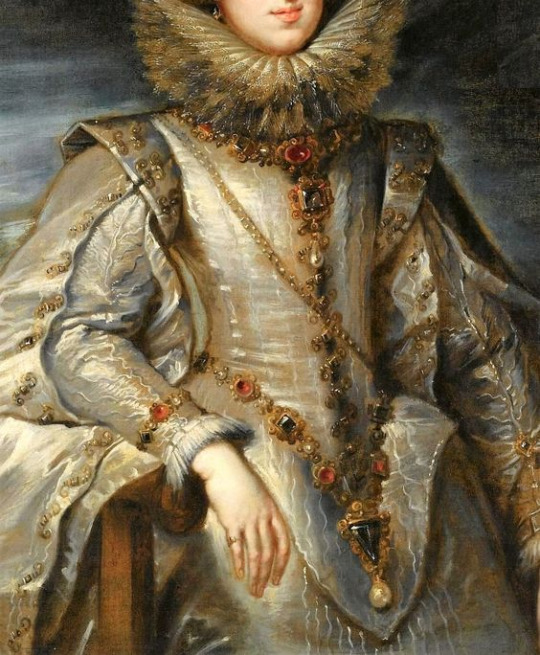


The straws in question.
Actually, this brings up a really good point of inquiry. Where does this drapery-between-the-legs situation that modern fantasy seems to be so enamoured with come from?
Tabards would seem the obious answer, but even that, in modern parlance, is used as an umbrella term for a wide range of garments that may or may not have any true basis in reality.
There's also just... loin cloths, I suppose, which can look like a piece of fabric just draped over the crotch and hanging between the legs, but there's usually more to it than that.
At last, after some digging around, I came across the video below. Bless Shad for his contribution to society.
It goes over all the the differences between those various styles of garment usually bearing symbols of allegiance all lumped together as "tabards", and presented me one more vocabulary word with which I was not yet familiar: the scapular.
youtube
Alas, monastic garb is my blind spot. Silly that I've played at least five clerics so far.
To summarize, I think the that the shape of the lower part of Strahd's... whatever-it-is... is inspired by a mix of these garments described in the video. It's short like a tabard should be, and has that dip between the legs reminiscent of a scapular.
But, ultimately, this thing is a waistcoat. Not a waistcoat in the Victorian sense; a waistcoat in the mid-18th century sense.
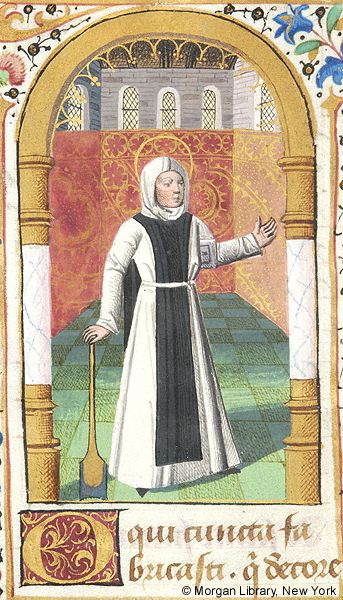
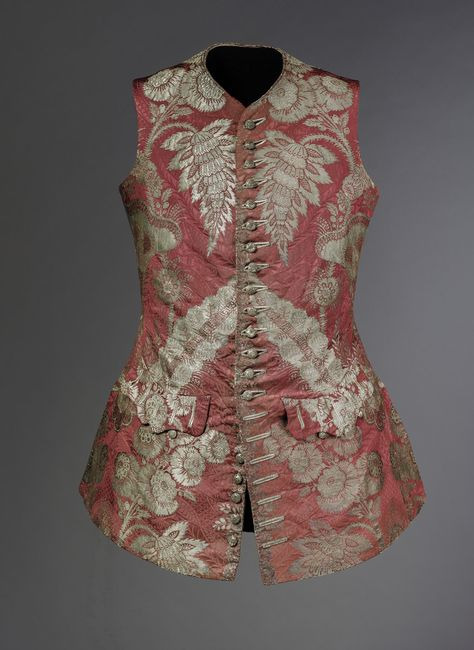

Monk wearing a scapular, and some fancy waistcoats.
Finally, the very-high standing collar on Strahd's waistcoat smacks of a couple things: Russia (again), or the Regency era. Although, in the Regency years, waistcoats became much shorter (ending at the waist) and lengthened up the other way with high standing collars. But, if you were to combine the two waistcoats above and throw in some suggestive high-hip cutouts like a 1980's leotard, you might come out with something that resembles what Strahd is wearing in all that sumtuous art.

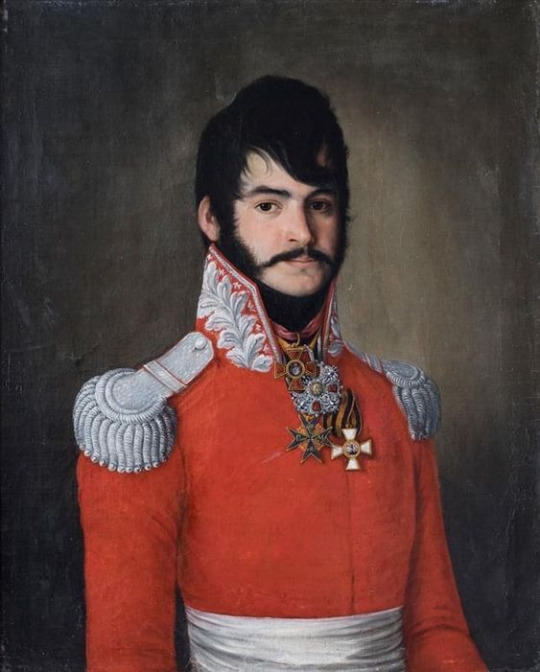
The one with the sash really drives the comparison home.
With the initial kaftan comparison and this guy with the funny hair (a Count Vasili, coincidentally) above, Strahd von Zarovich's red/blue fantasy garb is also giving the Motherland, and folks, I already said that I was trying to keep blatant Russia out of Barovia (as much as that garb clearly slaps). But I also recently remembered due to this post that I am a total sucker for Russian pet names, so... who knows.
In the end... do I know what I'm doing? Absolutely not. I'm not sure which of these elements will filter into further consideration for my own Strahd von Zarovich costume, but I'm definitely glad I gave all this a look. Absolutely worth it. Learned a lot. ♡
#costume things#costuming barovia#strahd von zarovich#costume design#fashion history#costume history#curse of strahd#lamour dms cos#art analysis#art appreciation#ravenloft
32 notes
·
View notes
Text
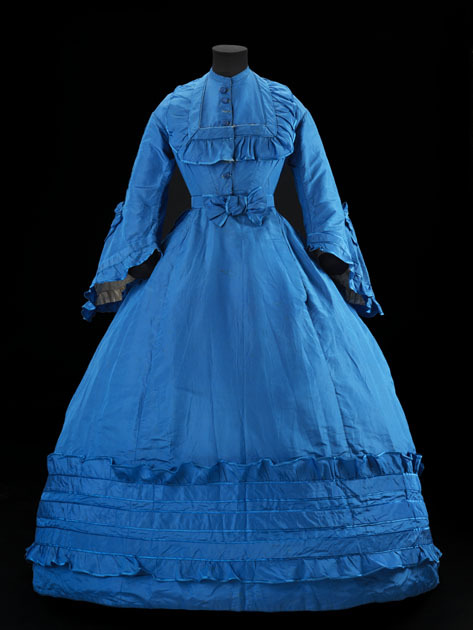

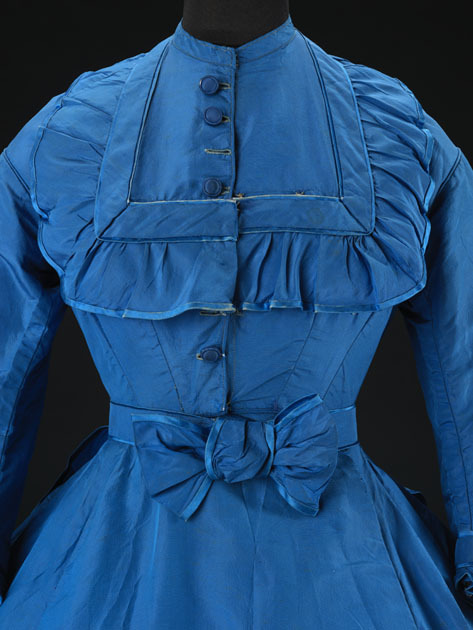
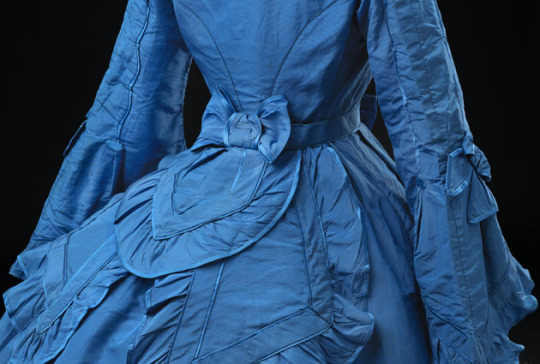
© CSG CIC Glasgow Museums Collection
That is the bluest kind of blue, and given its date (1866-1867) we know it's been dyed with the technologically cutting-edge aniline dyes of the period. As the museum (the Glasgow Museum) notes, some dresses of this era faded with time, but not so in this case.
You can already see the shape of this gown streamlining slightly, the bodice creeping toward the more tailored, masculine styles of the 1870s and 1880s. The monochrome look was very popular at the time, with the then-new House of Worth (who at the time was working with Bobergh). You can see very similar gowns from the duo at the Met, in fact, often in a gorgeous lavender hue.
#fashion history#costume#historical costuming#silk dress#textiles#costume history#threadtalk#victorian fashion#history of fashion
2K notes
·
View notes
Text
Tron-spiration: the otherworldly fashion of Erté
So, seeing as people enjoyed my post about the influence of Tron 1982 on Alexander McQueen, I figured I should do some more posts about costume history and Tron.
So...
Erté.
Even if you are unfamiliar with the man, you have almost certainly been exposed to his art in some way or other. The work of graphic artist and designer Romain de Tirtoff, known by the French pronunciation of his initials "R T", left an indelible mark on our perception of the 1920s Art Deco period.
I happen to think it also left a mark on the costuming of the Tron 1982 movie, be it less directly.
Let me illustrate:
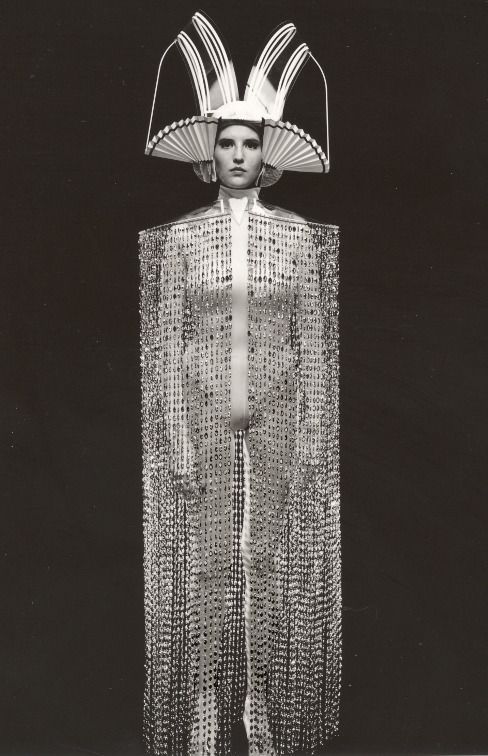

(This one may just be my favorite example, actually. Many thanks -or perhaps apologies- to @greetingsprogram1982 for putting this datapusher lady on my dash and sparking this post!)
Now, there are more parallels to be drawn (see below), but I don't think the work of Erté was necessarily a direct influence on Tron.


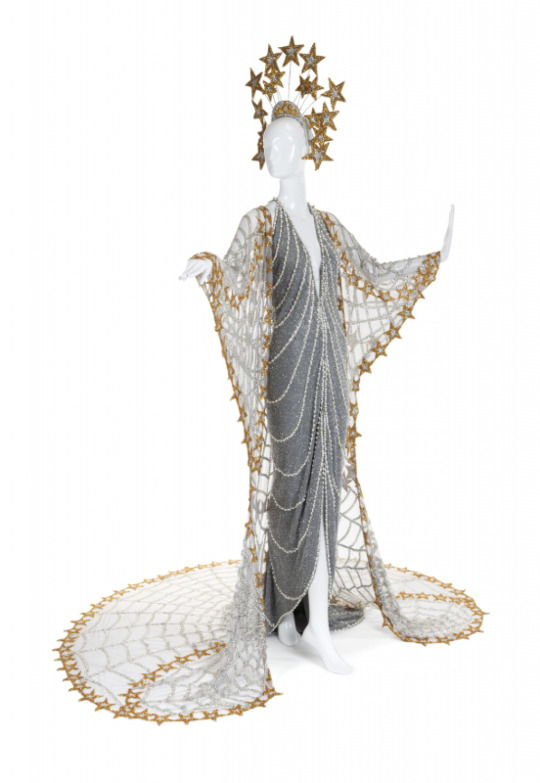

Rather, I feel like Erté often drew characters and costumes that wouldn't feel out of place decked out in circuits on the ENCOM system, with their graphic lines, sweeping drapery and extravagant headdresses. Mostly designed for the stage, Erté's fashion embodies a sense of being intended for another dimension entirely. His work is a visual fantasy of a different world; graphic, luscious, permissive, and dripping in the technological optimism of Art Deco and the 1920s. And well... isn't that a mindset quite close to the vibe of Tron?
In other words, I can easily see cultural osmosis pulling the 1982 concept artists to similar stylistic ideas...




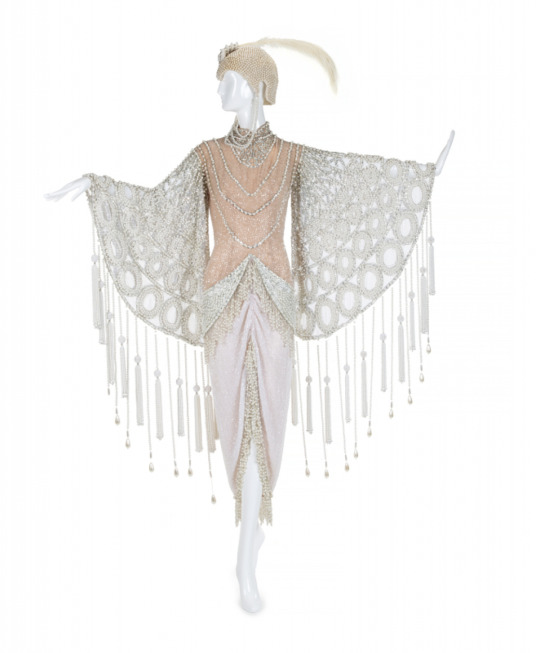
Now, I realize most of the examples I have shown are fairly muted in color, which was not a deliberate choice! Erté has more to offer than that. Tell me honestly that you can't see some ENCOM system Datapushers rocking these outfits:

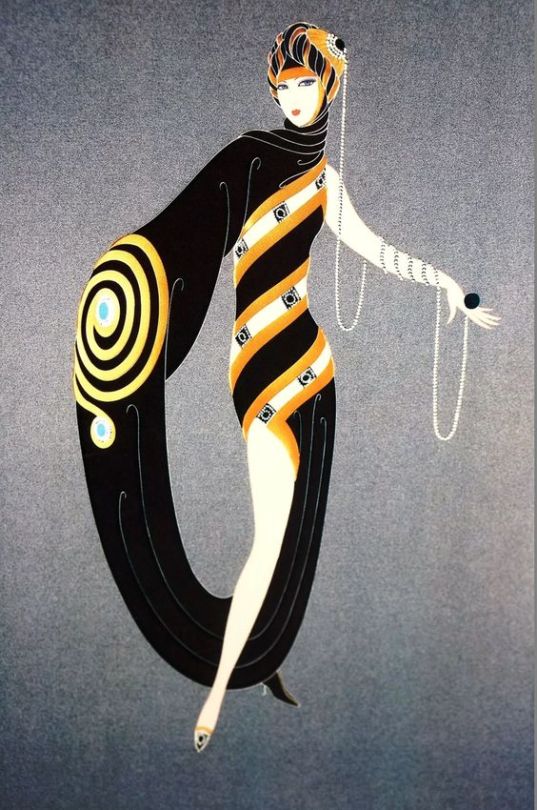


And to round it out... the later Tron media leaned away from the 1982 style that so echoed Erté and the fashion of the Art Deco to me, but there is something left of it...


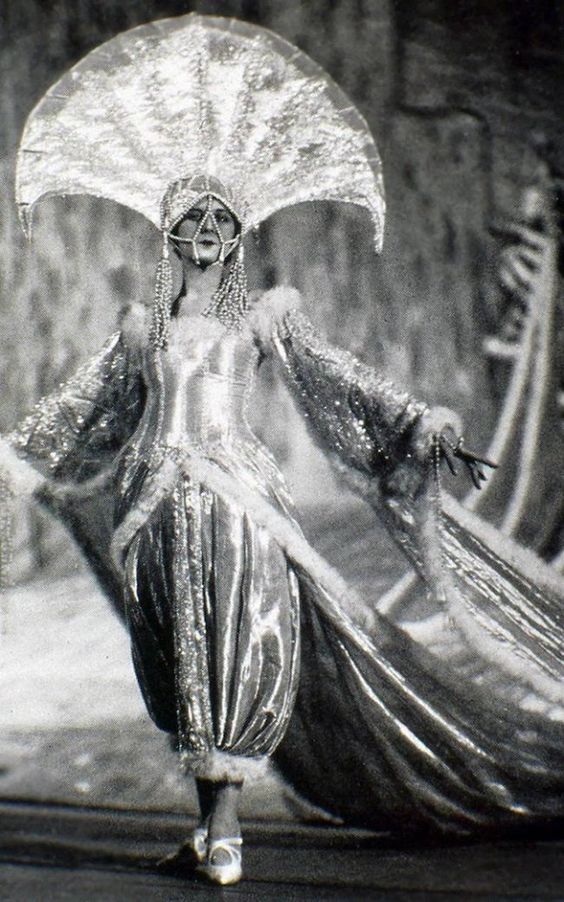
(Somehow, I always end these posts with Radia? But well, fair is fair, she is the only modern Tron character who'd fit in an Erté illustration xD)
Anyway, if you enjoyed this, there's a pretty good collection of a lot of Erté's graphic work online here, and this auction website still shows a number of the costumes that were made to his design (a few of which I featured).
#tron#tron 1982#tronblr#erté#romain de tirtoff#art deco#tron fashion#art history#costume design#costume history
103 notes
·
View notes
Text
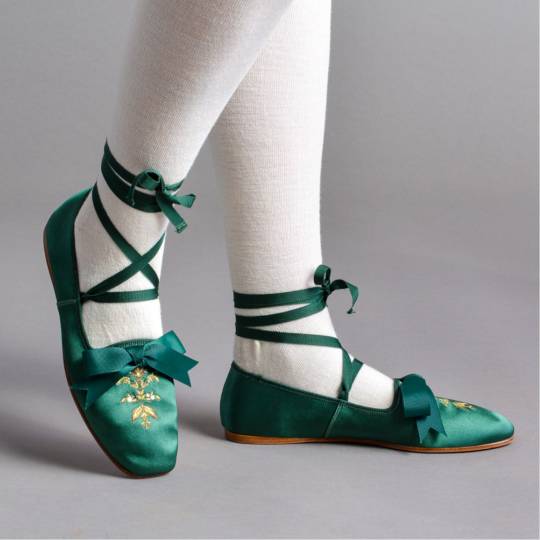

American Duchess Penelope Ladies' Regency Slippers in dark green (x)
#the 12 dancing princesses vibes!!#these come in 9 different colours and i want them all#unfortunately i am very small and i have no money#costume history
62 notes
·
View notes
Text

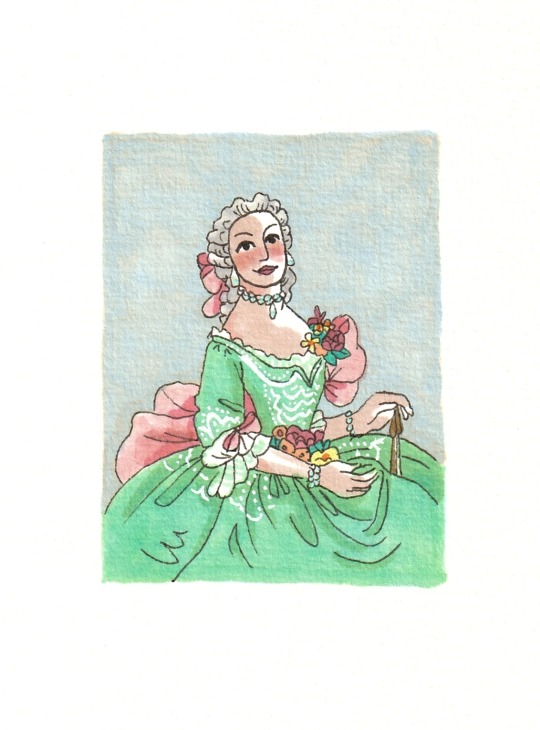

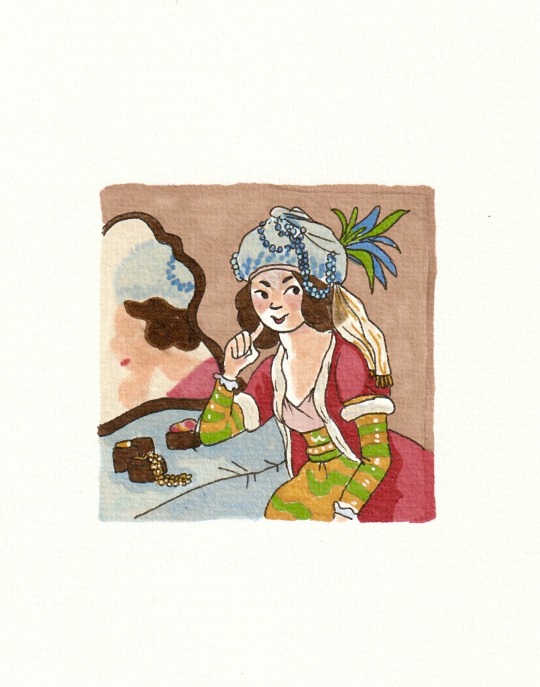
Inspired by Pierre Gobert, Robert Home and Wallerant Vaillant
23 notes
·
View notes